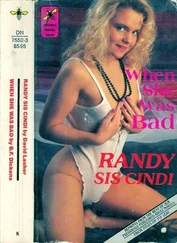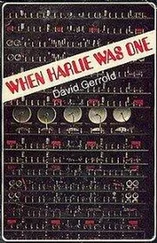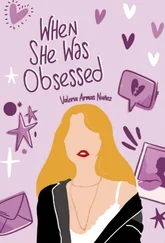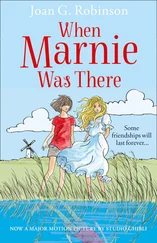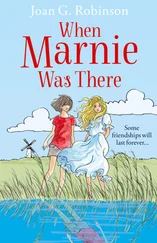‘From where I was, in 1990, I suppose that most people in my position would try to find another niche for themselves in the music business. But I have too much damaging, damaging pride. And if you take my lack of confidence, and you take my pride – well, there you really are shot by both sides.’
Contemporary Interventionism
In the Whitechapel Art Gallery’s survey of British experimental art from 1965 to 1975, ‘Live in Your Head’, there was a work by Keith Arnatt from 1972 in which the artist had been photographed standing on a busy street, wearing a placard which proclaimed, ‘I’m a Real Artist’.
Dour and faintly absurd, yet with a confrontational edge that flits between threat and polemic, Arnatt’s street sloganeering seems particularly relevant to a new sensibility that has emerged in contemporary British art, and that seeks to rearrange or dismantle the purpose and cultural status of current artistic activity.
In ‘Live in Your Head’ the foregrounding of documentation over aesthetics, for example, and of politics over individualism, could be seen as a direct rehearsal of the ICA’s ‘Crash!’ exhibition, or the ‘democracy!’ show curated by students on the Visual Arts Administration MA at the Royal College of Art. Taken as a gear-change in the zeitgeist, these shows and a host of lesser-known pamphleteers, activists, interventionists and ideologues, comprise a distinct reaction – or response – to the agenda set within the visual arts throughout the 1990s.
On the one hand, there is a sense in which dissident, confrontational or otherwise socially engaged artistic practice would seem to become disqualified the moment that it has any relation with the ‘elite’ white cube of the gallery, or the social systems of the art world. On the other, within the gradations of artistic dissent – from artists engaged in direct street action, through to those who are actively reinventing the notion of art in the community – there still seems to be room for such work to be curated without losing its integrity.
‘Many of the major new galleries have engaged artists to work with communities in imaginative education and outreach programmes,’ says Teresa Gleadowe, the Course Director of the Visual Arts Administration MA at the Royal College of Art; ‘Such activities have little relation with traditional studio-based practice – they involve public participation, research, conversation, exploration, shared interests and causes. Social engagement is a common concern. Most of these projects do not result in the production of art objects, and some may not easily be recognized as art at all.
‘The “democracy!” exhibition took on the job of representing some aspects of this activity and of finding ways of presenting it in a gallery situation. This is a difficult and even paradoxical endeavour, which demands from the visitor a level of deep engagement – reading, listening, forensic investigation. As an exhibition subject it is a risky enterprise, and one which might not easily be undertaken by an established institution. It seems appropriate that young curators, working within the research environment of a curatorial course, should give themselves the task of making manifest practices of this kind.’
Evidence that such socially engaged art practice is swiftly gaining in significance, raising a host of issues related to venue, craft, distribution and commodity, can be seen at a glance from some of the artists involved in ‘democracy!’. Sarah Tripp’s documentary project, for example, interviewed a network of people about their faith and belief; Group Material – best known for their ‘AIDS Timeline’ – were an artists’ collective based in New York’s Lower East Side, ‘committed to art’s potential to effect social political change’. Also for ‘democracy!’ Jeremy Deller worked with elderly people, ‘opening the doors of the Royal College’s Senior Common Room to the members of a local drop-in centre’.
Taken point for point, a freshly politicized approach to making art can be seen to exchange the sexual, nihilistic, aesthetically exquisite and pop culturally individualist agenda of last decade’s ‘Sensation’ generation, and replace it with a virtually existentialist reassessment of art’s capacity and function. Where the lucrative visceral shock tactics of Emin, Hirst or the Chapman brothers could be seen as the convulsions of outraged romanticism, so the various practitioners and collectives of the latest sensibility appear to be based in a kind of philosophical ethnography, questioning social and cultural power structures from the outside, and developing an art that is largely impossible to own, display or accord a financial value.
For the novelist, pamphleteer and founder of the Neoist Alliance, Stewart Home – who famously went on ‘Culture Strike’ between 1990 and 1993, refusing to make any new work at all – this relationship between culture, commodity and distribution is central to both his writing and its publication. He regards both Tracey Emin, with whom he once exhibited, and Damien Hirst as artists who have ‘recouped’ on his ideas (his ‘Culture Strike’ bed, and his ‘Necrocard’, respectively) by turning them into commodified objects.
‘I guess that in some ways I’ve worked with self-publishing and small presses in order to enable different discussions to go on outside of the commodified business exchange. The Tate have been collecting my pamphlets and leaflets since the 1980s, so you can criticize these institutions, but their archivists and librarians are really on the ball. Basically, if you get an A3 sheet of paper, and fill it with whatever polemic you want, then those ideas are going to get around and get a response.’
A further collective devoted to such practice is Inventory, formed in 1995 as a group committed to exploring the possibilities of anthropological research as text-based art. Through their Inventory journal – with the slogan, ‘Losing, Finding and Collecting’ – and a succession of activities based on street interventions, Inventory could be seen to represent a determinedly outsider stance, while seeking new, cheap ways to disseminate their thinking.
‘We all abandoned individual practice at the start of the 1990s,’ says an Inventory spokesperson, ‘primarily because we found the whole new British art scene, which had originated around Hirst’s “Freeze” exhibition, to be utterly alienating. We saw ourselves as more connected to surrealism, Dada, Walter Benjamin or Bataille, and we wanted to talk about ideas through a journal which could be slightly academic, mad, and shocking.
‘But that wasn’t enough; we wanted to explore the various economies of social life through social situations, and so our work is political inasmuch as it’s occurring at a time when even the word “socialism” appears to be taboo. We regard nihilism in a pro-active, Nietzschean sense, as something to be worked through, and empowered by. By investigating the nature of field work, we turn the anthropological gaze back on ourselves. This could be translated into politics – through the surrealist notion of a permanent state of revolution.
‘I don’t think that anyone in the London contemporary art scene trusts us enough to represent us; they like us to be a bit of a cult. But we’ve survived for five years without them, and so we can easily do another five. We’re quite happy representing ourselves.’
One of Inventory’s better-known ‘interventions’ was a fly-posting project in Hanway Street, in London’s West End, called ‘Smash This Puny Existence’. Braving foul weather, local hostility and the approaches of bored prostitutes, the group fly-posted this dark cut-through between Oxford Street and Tottenham Court Road with a series of newsprint posters proclaiming such announcements as ‘The Puerilification of Culture’ and surrealist texts on the experience of walking through a city. The group also discovered that a loophole in public by-laws made it possible for a person to stand on Oxford Street holding a large placard (of the sort usually seen advertising closing-down sales) which blared ‘Smash This Puny Existence’.
Читать дальше



